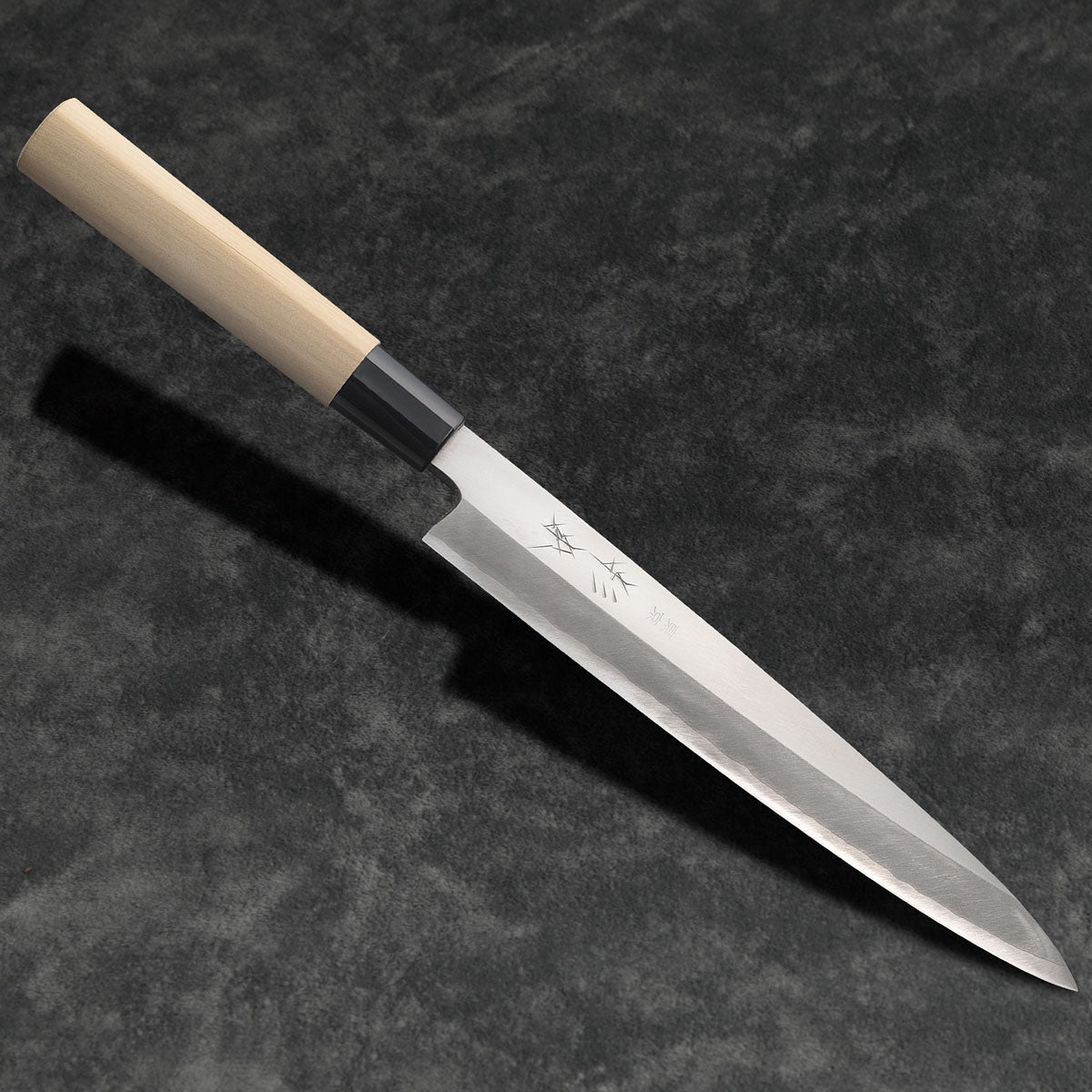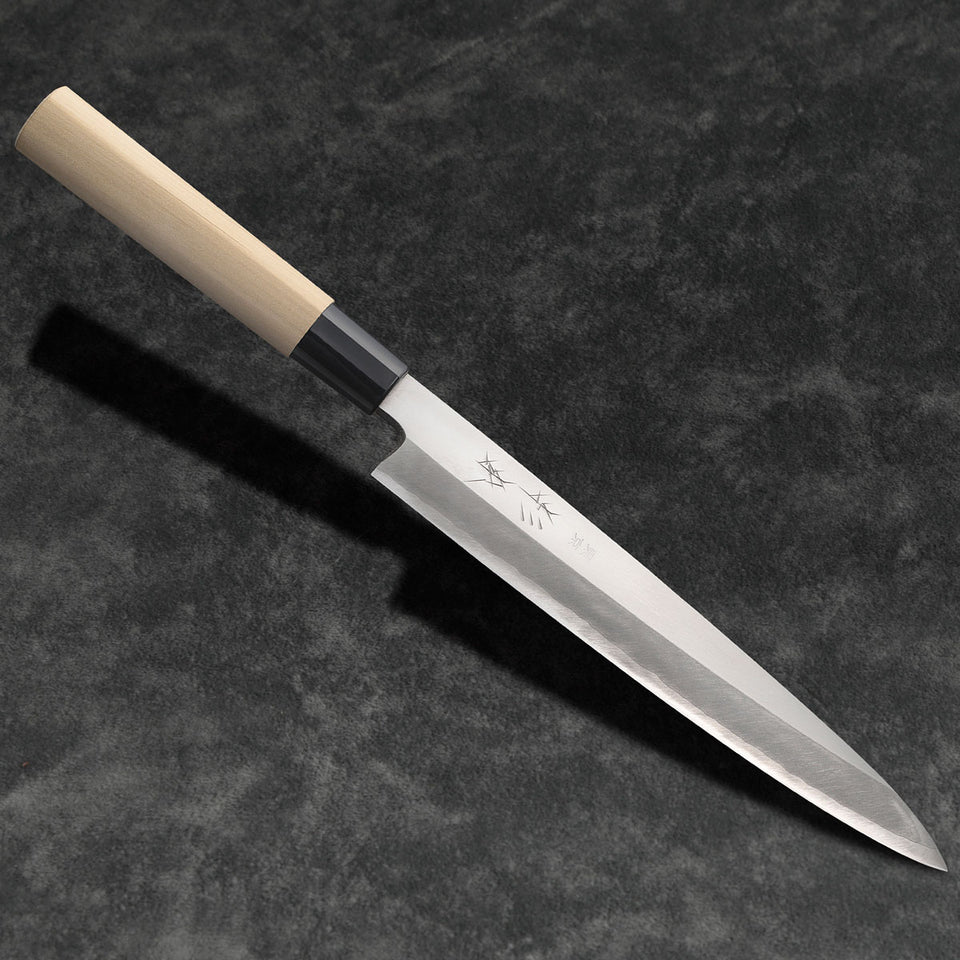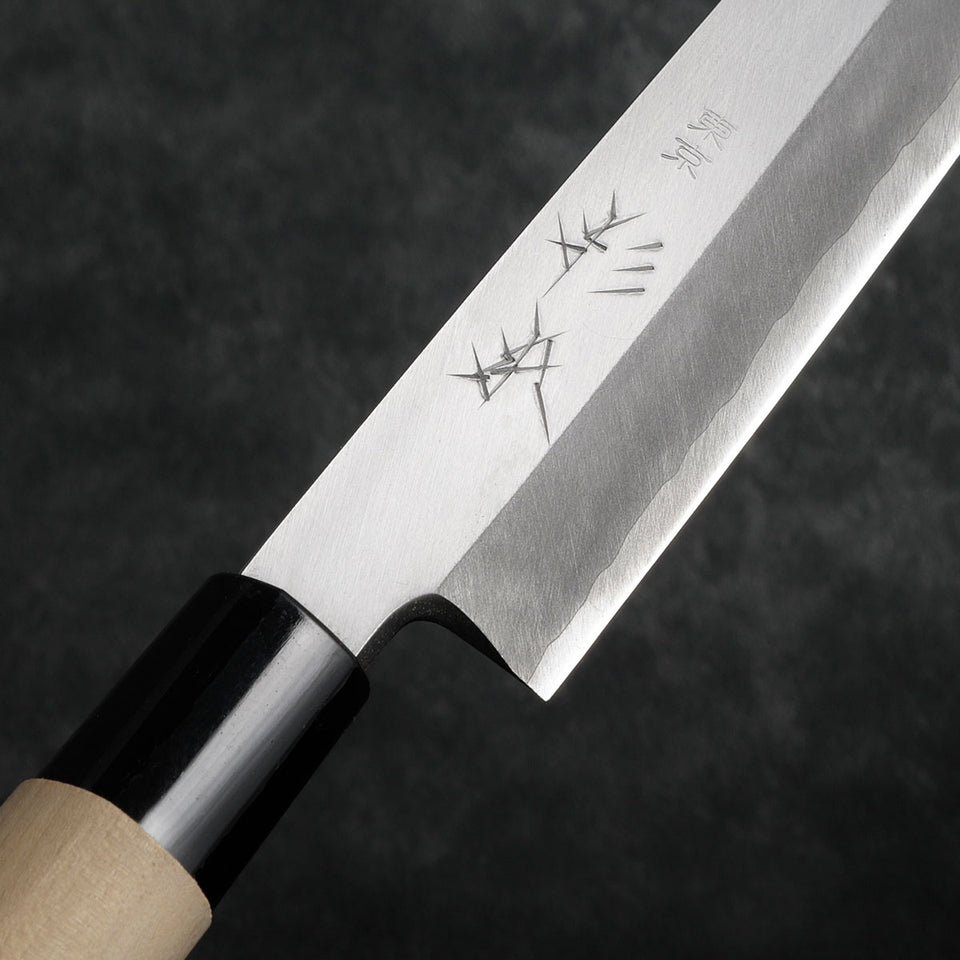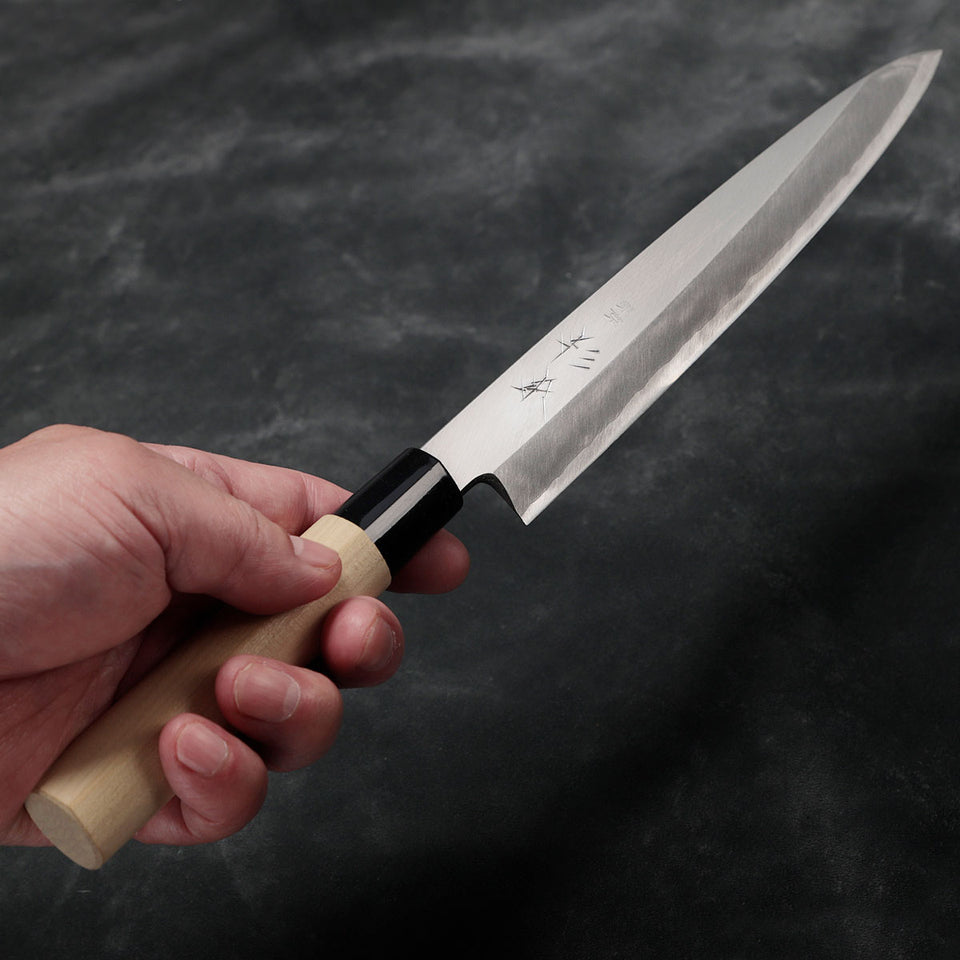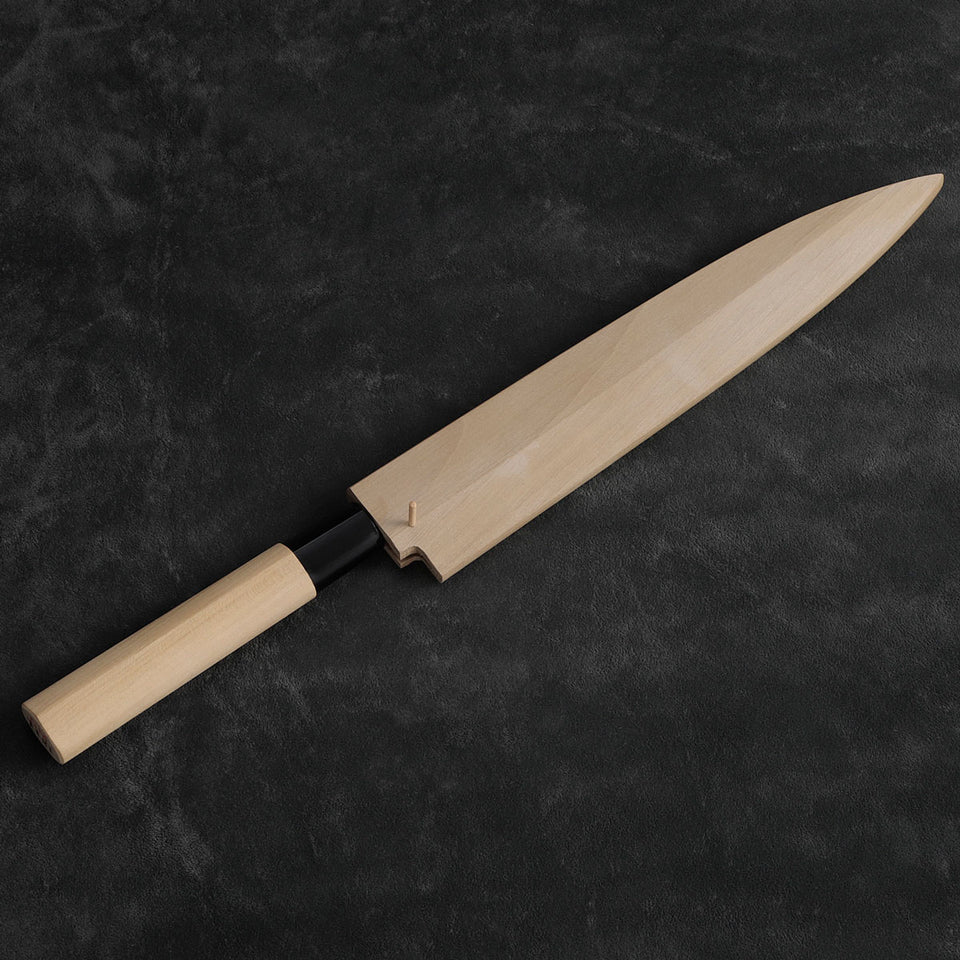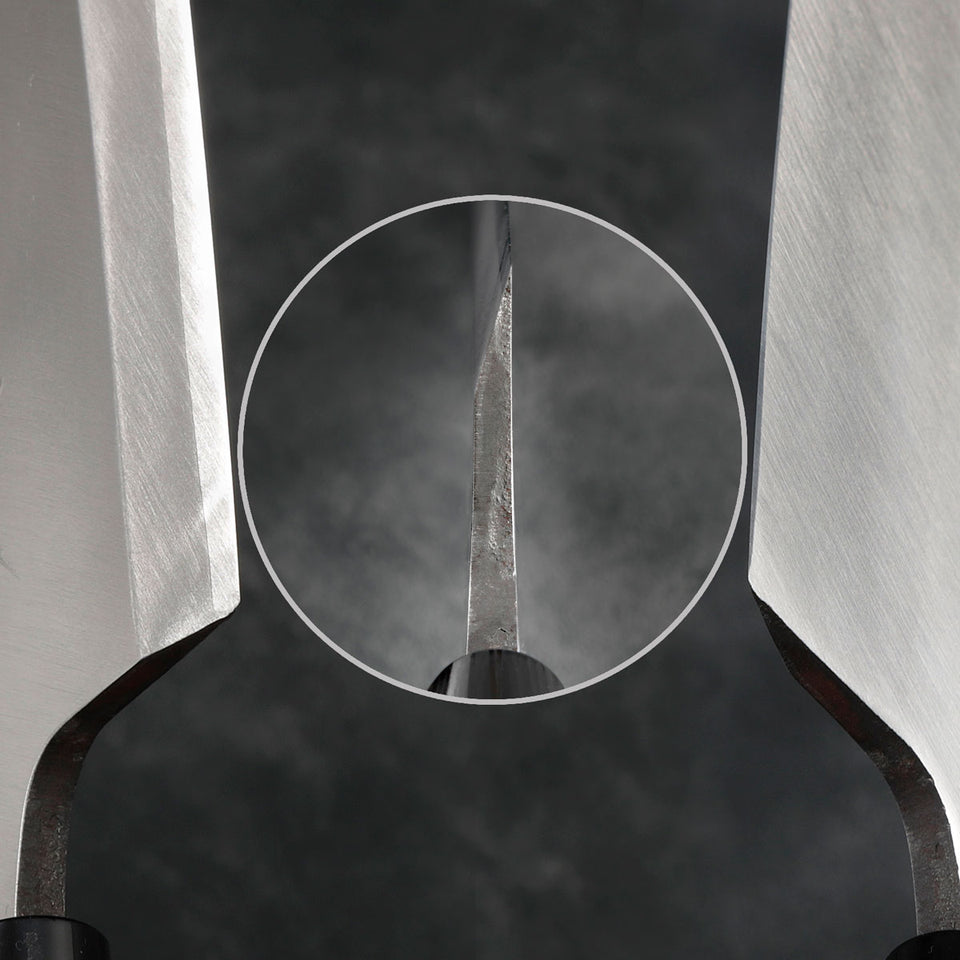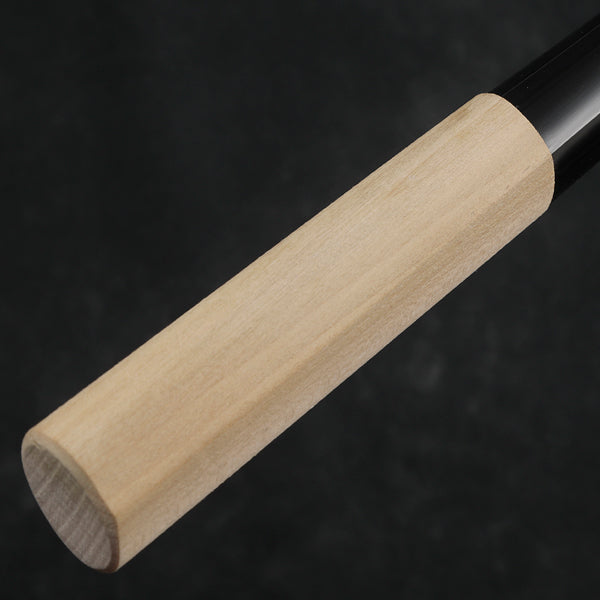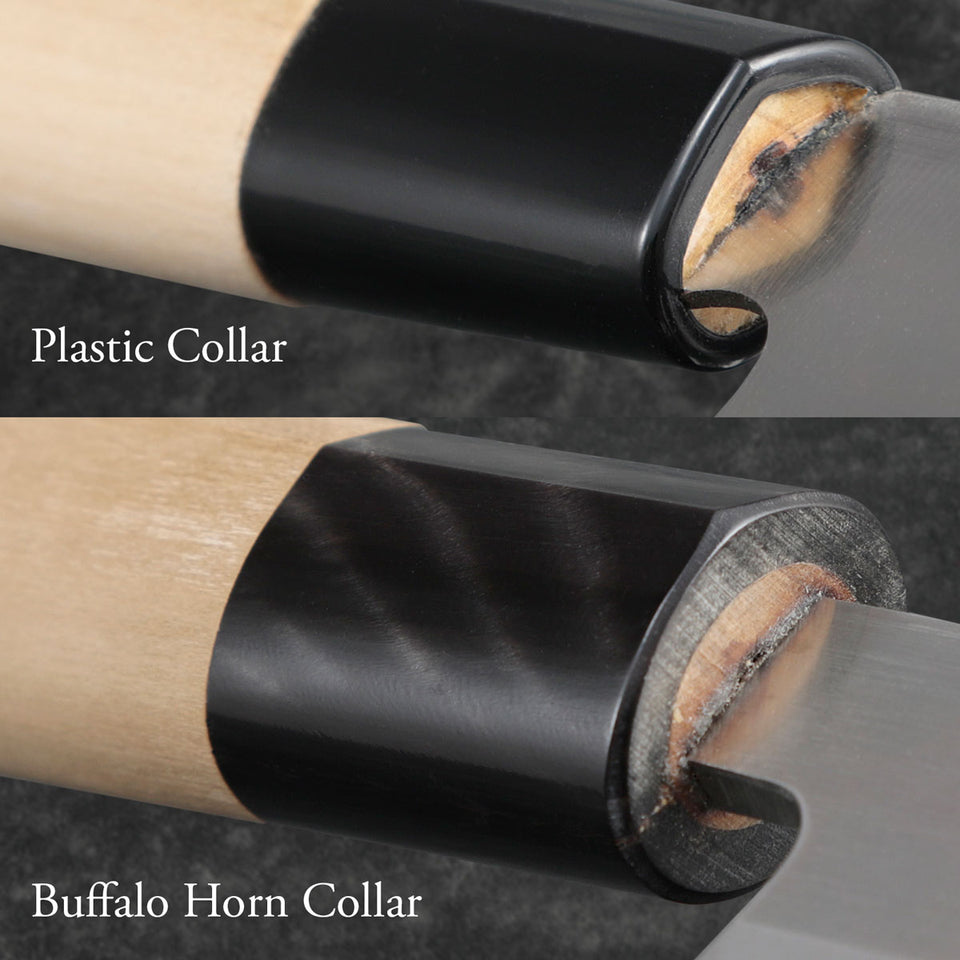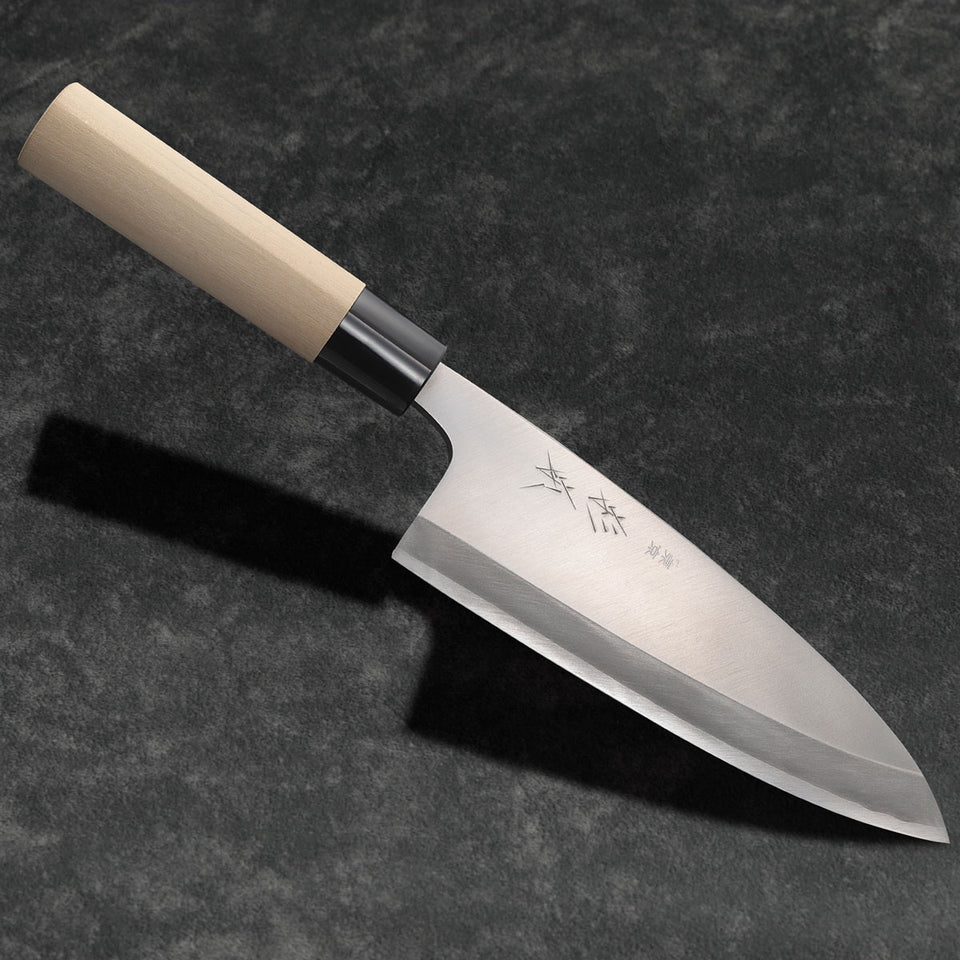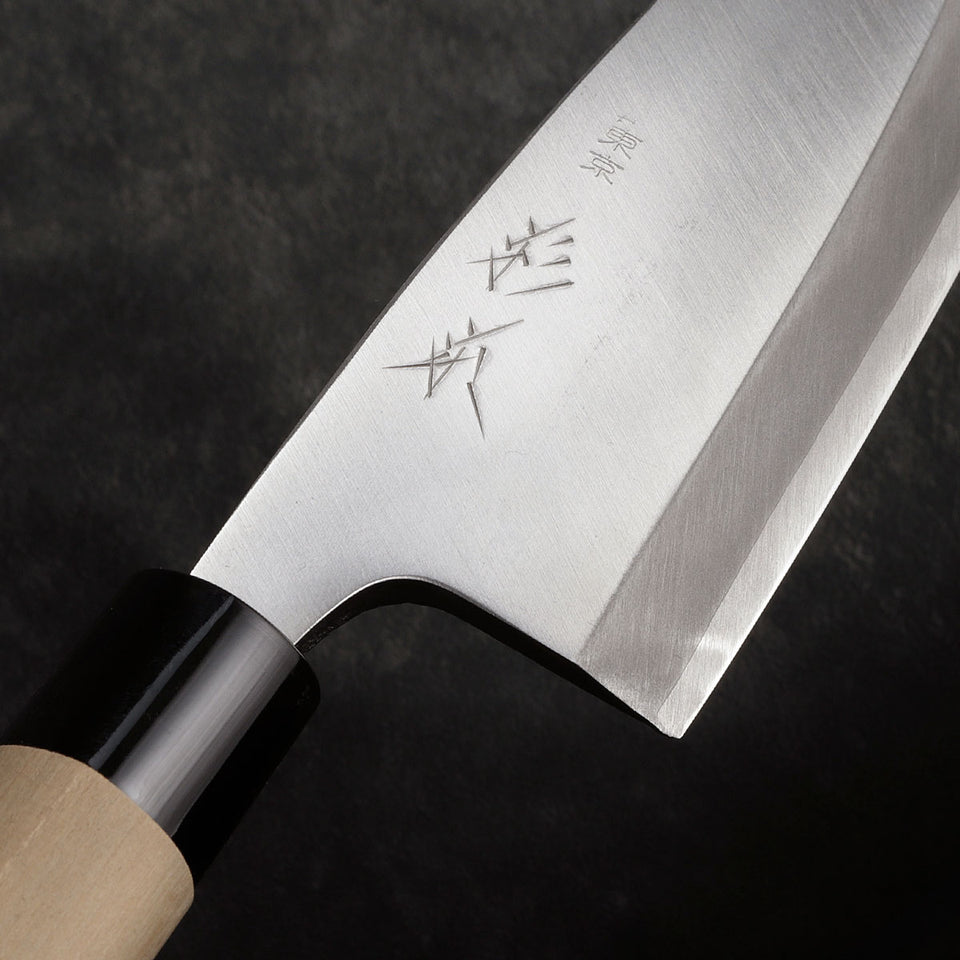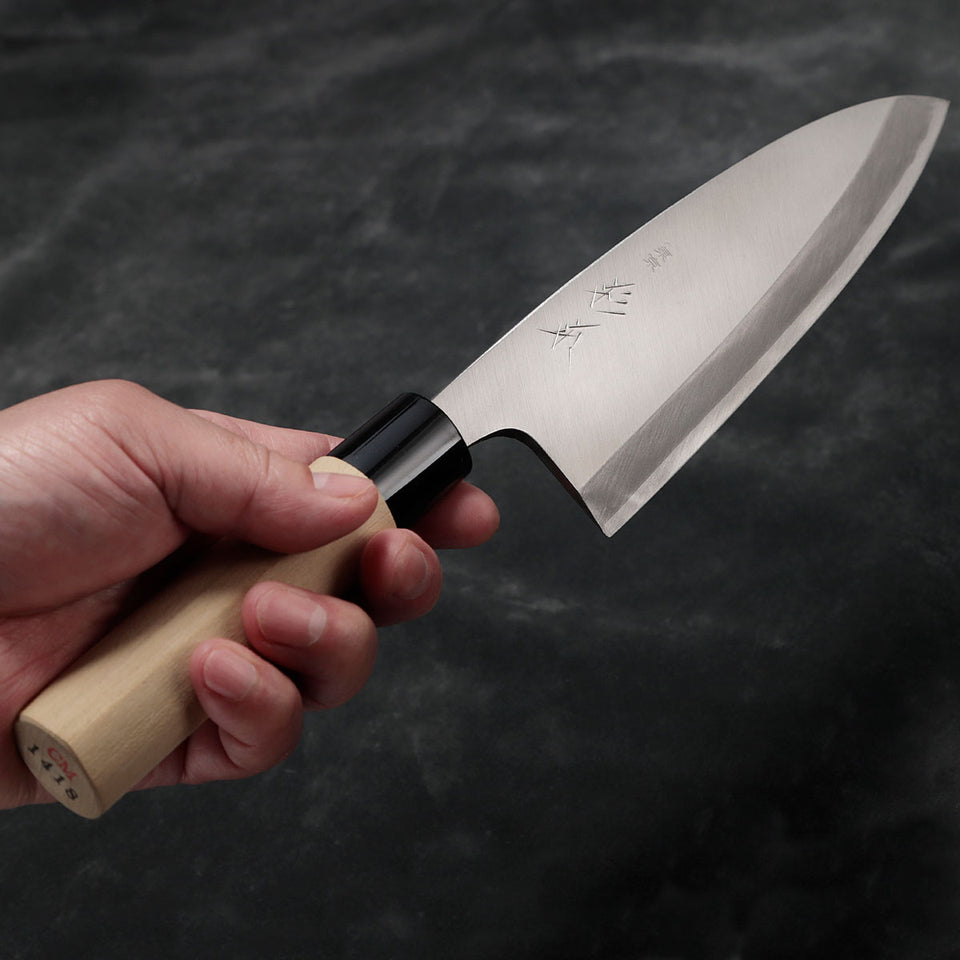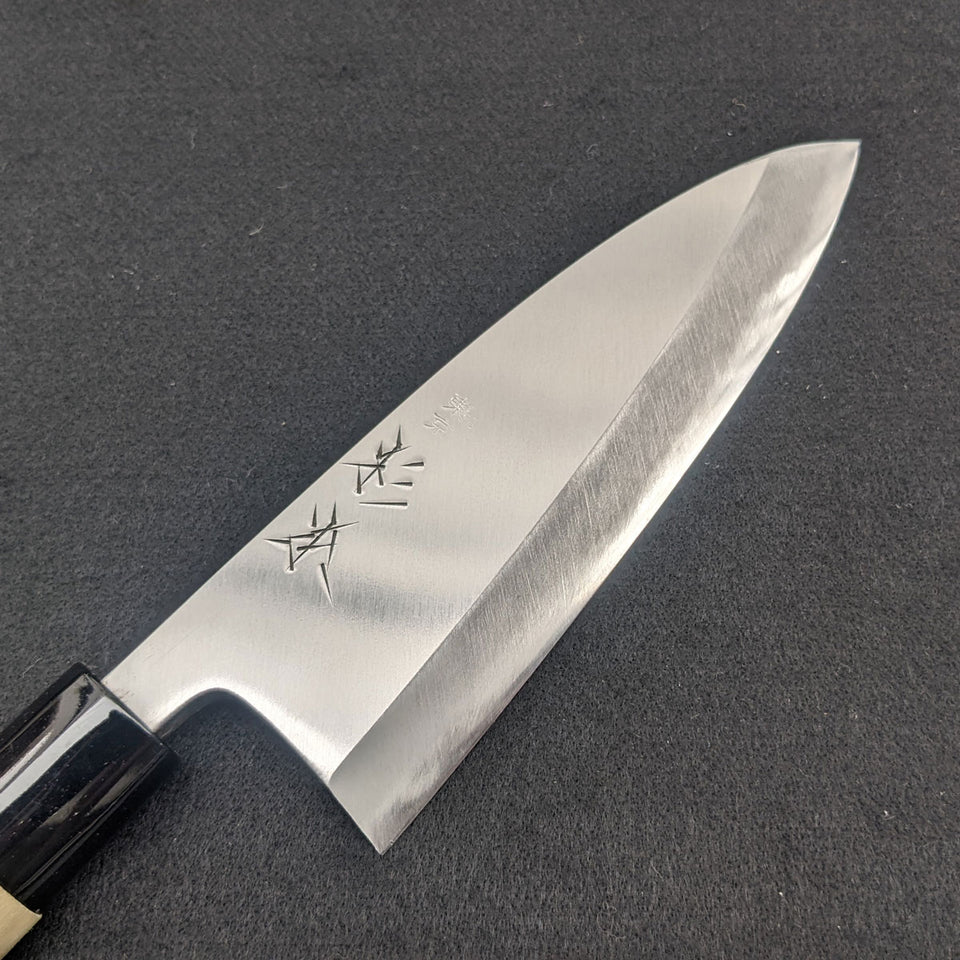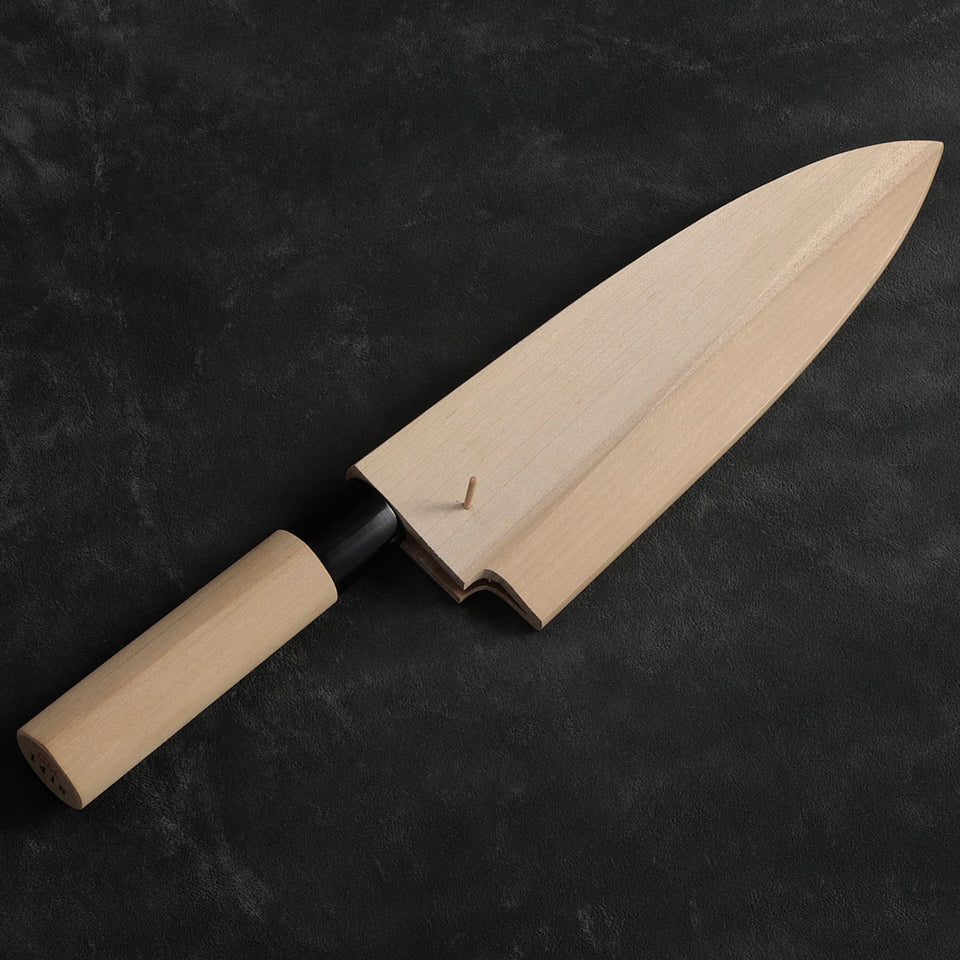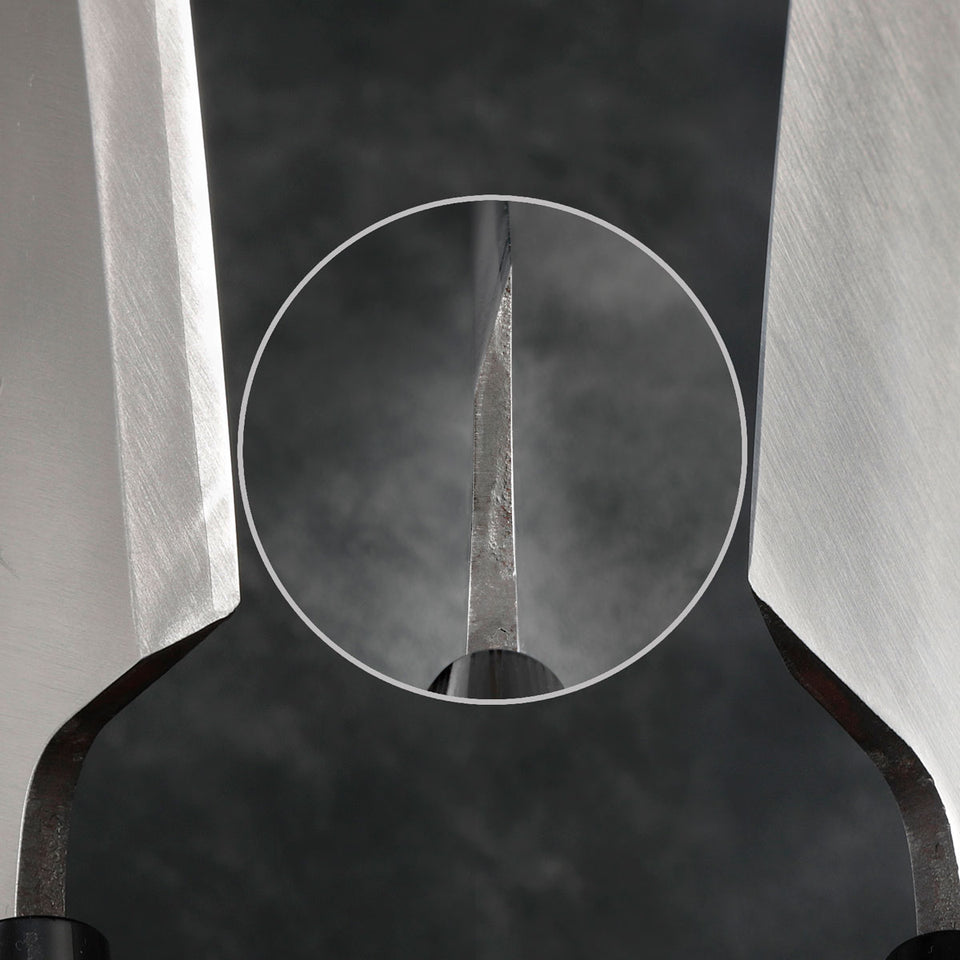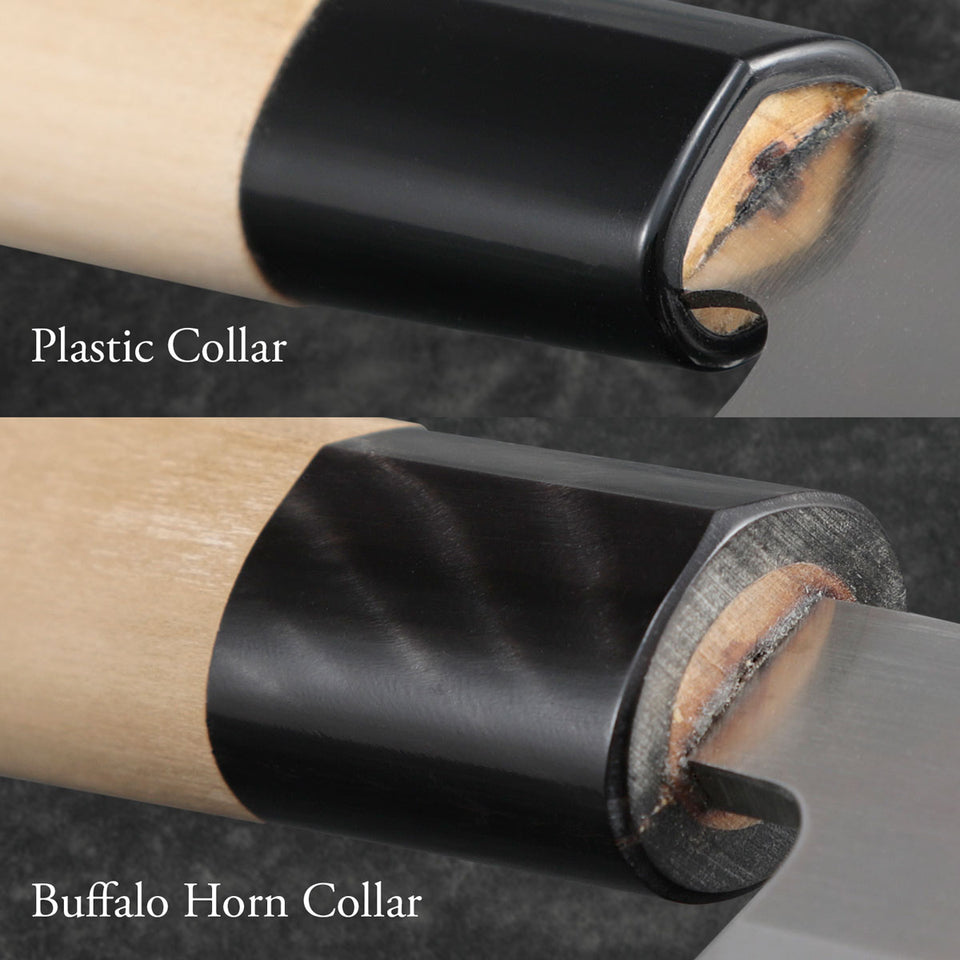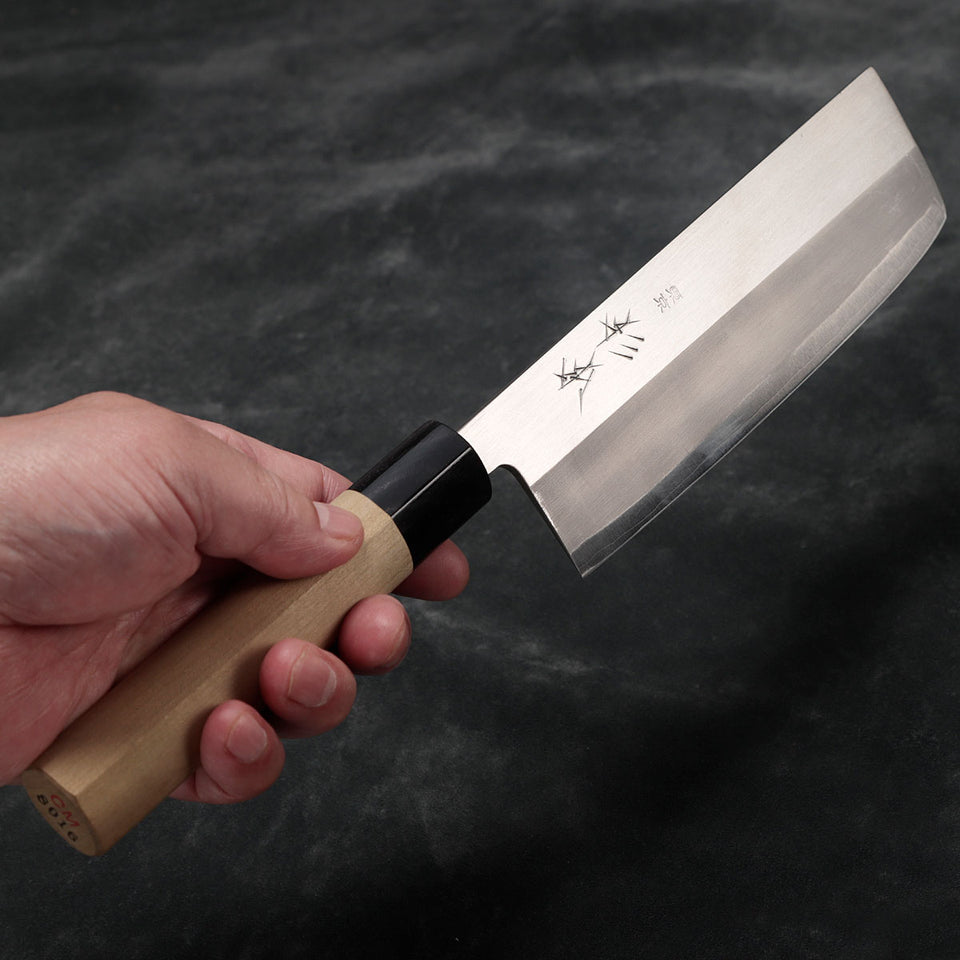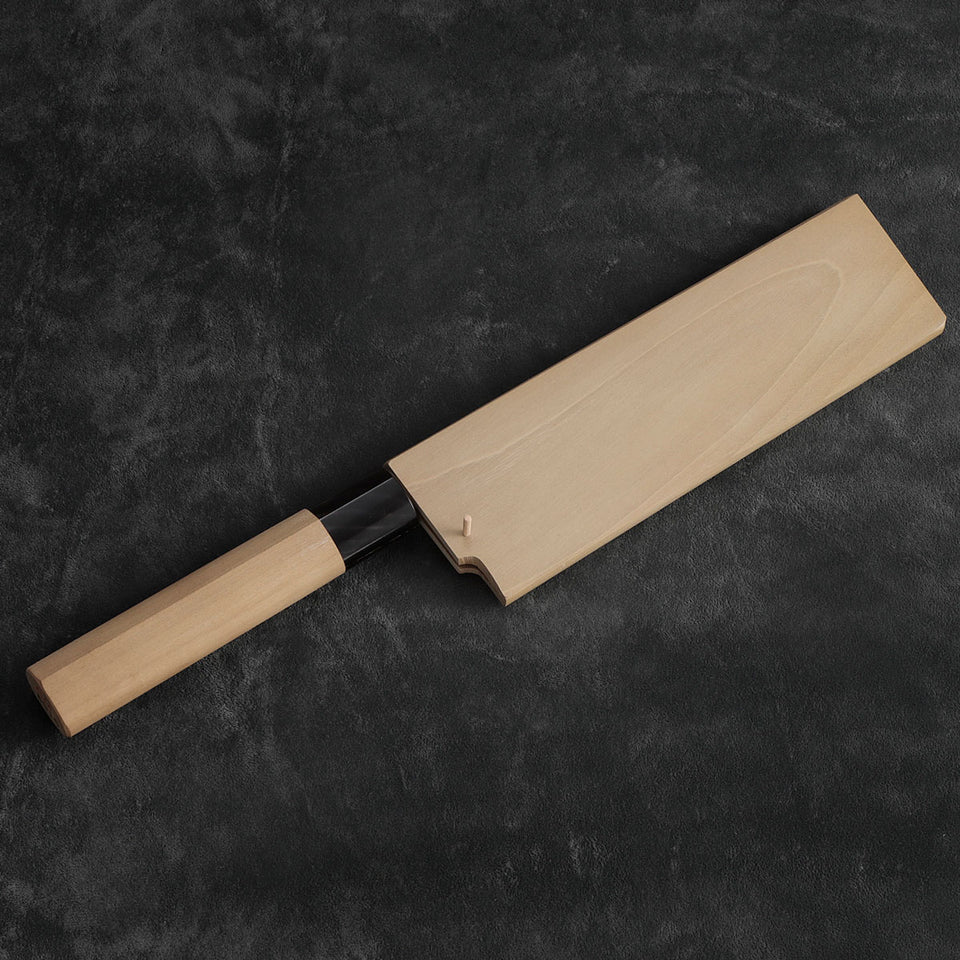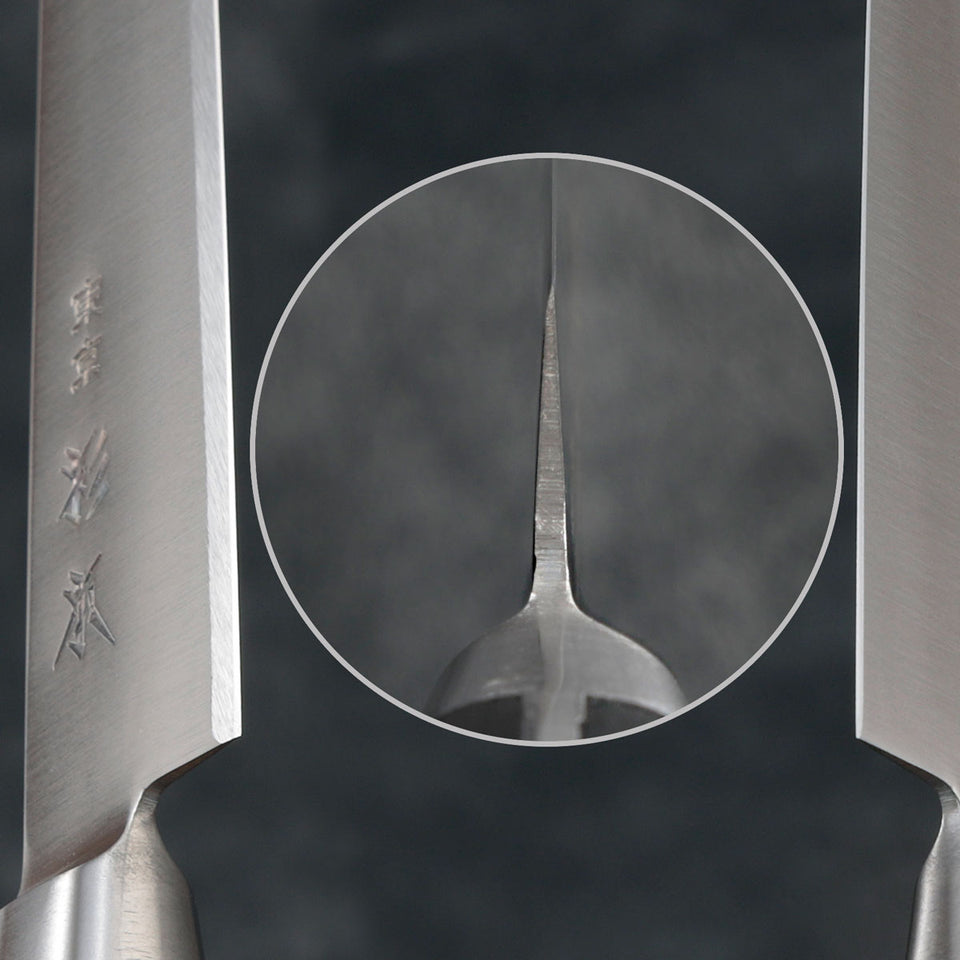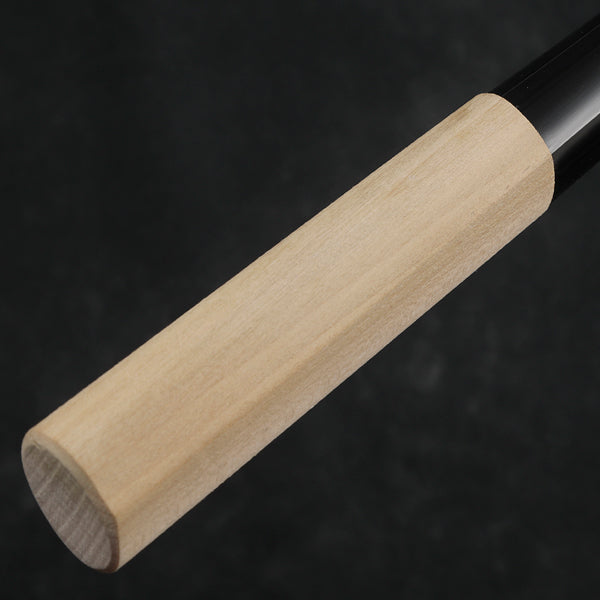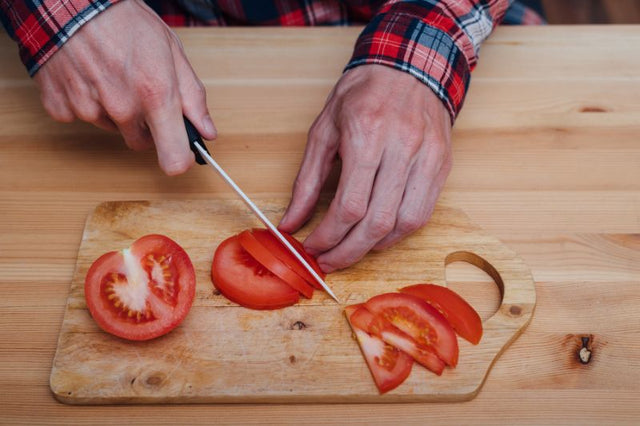When making sushi at home, you'll want to use a few different knives to ensure you can adequately prepare and slice all your ingredients. Here are some knives that are commonly used in sushi making:
Also known as a sashimi knife, the Yanagiba knife is a long, narrow blade perfect for slicing raw fish for sushi. The sharp, single-edged blade allows for clean cuts, and the length of the blade makes it easy to cut slices in one smooth motion. To use a Yanagiba knife, hold the knife at a 30-degree angle to the cutting board and use a single smooth motion to slice the fish. It's essential to use a sharp knife and apply even pressure to ensure the cut is clean and even.
2. Deba Knife
The Deba knife is a heavy-duty knife designed for filleting fish and cutting through bones. This knife is perfect for preparing fish for sushi and sashimi, as it can be used to remove the head and bones and cut the fish into fillets.When using a Deba knife, start by getting rid of the head and tail of the fish, and then use the blade to cut along the spine to remove the bones. Next, use a sawing motion to cut the bones and apply pressure to ensure a clean cut.
The Naikiri knife is a Japanese vegetable knife perfect for slicing and chopping vegetables for sushi rolls. This knife has a thin, straight blade that allows for precise cuts and is also great for creating decorative cuts and shapes in vegetables. To use an Naikiri knife, hold the knife at a 90-degree angle to the cutting board and use a downward motion to slice vegetables. Apply even pressure to ensure that the cut is clean and straight. Petty Knife: this knife is a small, versatile knife that can be used for various tasks when making sushi at home. This knife is excellent for trimming vegetables, cutting small pieces of fish, and removing the skin from fish.
When selecting knives for making sushi at home, choosing high-quality, sharp, and well-maintained knives is important. A dull or low-quality knife can make it difficult to prepare your ingredients properly and lead to kitchen injuries. To use a petty knife, hold the knife in your dominant hand and use short, controlled motions to trim and cut small pieces of fish or vegetables.
The best sushi knife for you depends on your preferences and the type of sushi you plan to make. It's important to note that these knives require practice and skill to use effectively. If you're new to using Japanese knives, practicing your technique and starting with simpler tasks before moving on to more complex cuts is a good idea. Always use caution when handling sharp knives, and keep them properly maintained and stored when not in use.
Get Free Bonus Books

Sign up for free to the Japanese Knife Club to get advice and exclusive articles about how to choose Japanese Knives, and tips and tricks for using Japanese knives.
About the author
Kei Nishida
Author, CEO Dream of Japan
Certification: PMP, BS in Computer Science
Education: Western Washington University
Kei Nishida is a passionate advocate of Japanese craftsmanship, a writer, and the founder and CEO of Japanese Knife Co., Japanese Green Tea Co., and Japanese Coffee Co., all part of Dream of Japan.
His journey began with a mission to introduce the world to the exquisite flavors of Japanese green tea. Through Japanese Green Tea Co., he pioneered the import of premium tea grown in nutrient-rich sugarcane soil, earning multiple Global Tea Champion awards. He then expanded into the world of coffee, launching Japanese Coffee Co., the first company to bring Sumiyaki charcoal-roasted coffee to a global audience.
With a deep appreciation for Japanese artistry and tradition, Kei turned his attention to one of Japan’s most revered crafts: bladesmithing. Through Japanese Knife Co., he made handcrafted katana-style knives, created by a renowned katana maker, available outside Japan for the first time. These exceptional knives embody centuries of samurai sword-making expertise, blending tradition with modern functionality for chefs and collectors alike.
Kei’s journey continues as he uncovers and shares Japan’s hidden treasures—one sip, one blade, and one legacy at a time.

